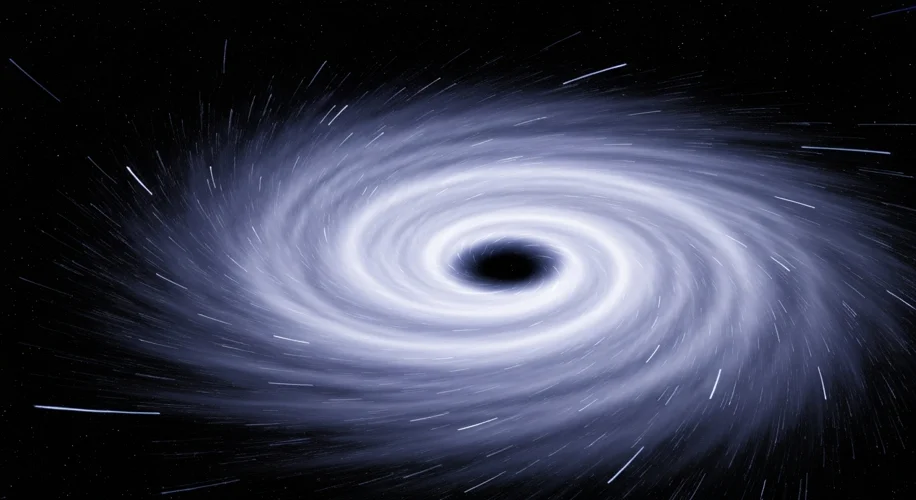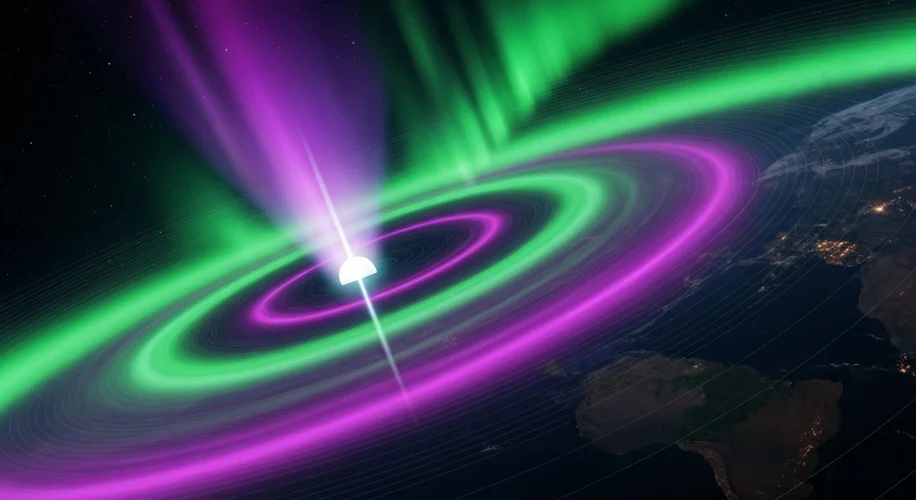Imagine a storm so vast it dwarfs continents, a tempest of pure energy swirling in the Earth’s upper atmosphere. Not the kind of storm that brings rain and thunder, but one that churns with charged particles, a cosmic vortex of plasma. These aren’t the stuff of science fiction; they are real, tangible phenomena known as ‘space hurricanes’.
For centuries, humanity has gazed at the sky, charting the predictable cycles of weather and the seemingly immutable patterns of the stars. We’ve weathered terrestrial hurricanes, marveled at the aurora borealis, and understood the Sun as a benevolent, life-giving orb. Yet, a hidden battleground exists in the very atmosphere that shelters us, a realm of immense power and subtle, yet potent, influence.
Until recently, these ‘space hurricanes’ remained largely theoretical, glimpsed only through the indirect effects they had on our planet. However, in 2014, a groundbreaking study published in Nature Communications brought these ethereal giants into sharp focus. Researchers analyzed data from multiple satellites, piecing together evidence of these colossal plasma vortices that form in the Earth’s ionosphere, typically over the magnetic poles.
What exactly is a space hurricane? Think of it as a giant, swirling vortex of plasma, a super-storm that can extend hundreds of kilometers into space. These storms are characterized by a central ‘eye’ where the plasma is relatively calm, surrounded by swirling masses of charged particles that rotate at incredible speeds. They possess multiple ‘arms’ or spiral bands, much like their terrestrial counterparts, and are fueled by the flow of energy from the Sun.

The visual spectacle of a space hurricane, if one could witness it directly, would be breathtaking – a luminous, ever-shifting storm of charged particles, potentially illuminated by auroral displays within its structure. Unlike terrestrial hurricanes that draw energy from warm ocean waters, space hurricanes are powered by the constant stream of charged particles from the Sun, known as the solar wind, interacting with Earth’s magnetic field.
The key actors in this celestial drama are the charged particles themselves – electrons and ions – and the complex magnetic fields that govern their movement. When solar activity intensifies, such as during a solar flare or coronal mass ejection, a greater influx of charged particles bombards Earth’s magnetosphere. This influx can energize and organize the plasma in the ionosphere, creating the conditions for these massive vortical structures to form.
The havoc these space hurricanes can wreak is subtle but significant. While they don’t cause physical destruction in the way a terrestrial hurricane does, their impact can disrupt critical technologies that we increasingly rely upon. These plasma vortices can cause:
- Satellite disruptions: The charged particles can interfere with satellite communication and navigation systems, potentially causing temporary malfunctions or even permanent damage.
- Radio blackouts: The ionosphere plays a crucial role in reflecting radio waves. Intense space weather, including these plasma storms, can disrupt these reflections, leading to blackouts in radio communications.
- Navigation system errors: GPS and other satellite-based navigation systems rely on precise timing signals. Space weather can alter the path of these signals, introducing errors and compromising accuracy.
- Power grid impacts: Although less common and direct than the effects on satellites, extreme space weather events can induce currents in long conductors, such as power lines, potentially leading to widespread blackouts.
The discovery and understanding of space hurricanes have profound implications for our ongoing quest to comprehend ‘space weather.’ This field of study is vital for protecting our technological infrastructure and ensuring the safety of astronauts and future space missions.
Before the direct observation and analysis of these phenomena, our understanding of Earth’s upper atmosphere was incomplete. The identification of space hurricanes provided a missing piece of the puzzle, illustrating the dynamic and sometimes violent nature of the interaction between Earth and the Sun. It highlights that even in the vacuum of space, powerful atmospheric-like events can occur, driven by forces far beyond our immediate sensory perception.
Furthermore, this research opens new avenues for scientific inquiry. Scientists are now working to predict the formation and intensity of these space storms, much like meteorologists predict terrestrial weather. Developing advanced forecasting models for space weather is crucial for issuing timely warnings and mitigating potential damage.
The existence of space hurricanes serves as a stark reminder of our planet’s vulnerability to cosmic forces. While we may build stronger satellites and more resilient communication networks, understanding these invisible tempests is paramount. They are a testament to the dynamic, interconnected nature of our solar system, where events light-years away can ripple through the Sun’s influence to manifest as awe-inspiring, yet potentially disruptive, phenomena in our own backyard – the upper reaches of our atmosphere.
As our reliance on technology grows, so too does our susceptibility to the vagaries of space weather. The study of space hurricanes is not just an academic pursuit; it is a critical endeavor for safeguarding our modern way of life in an increasingly interconnected and technologically dependent world. They are the silent, invisible storms that shape our high-tech existence, a powerful echo of the cosmos playing out in the skies above.

